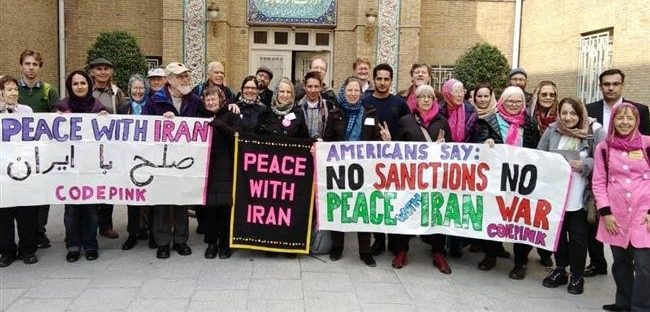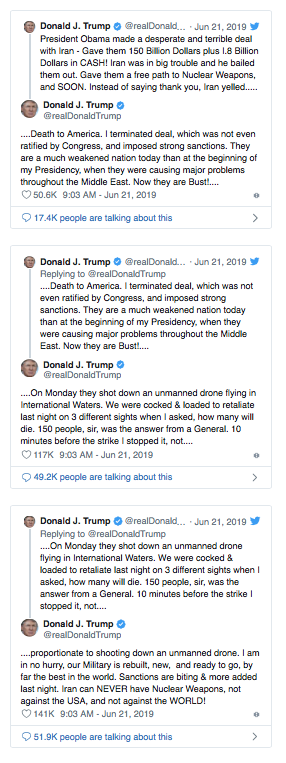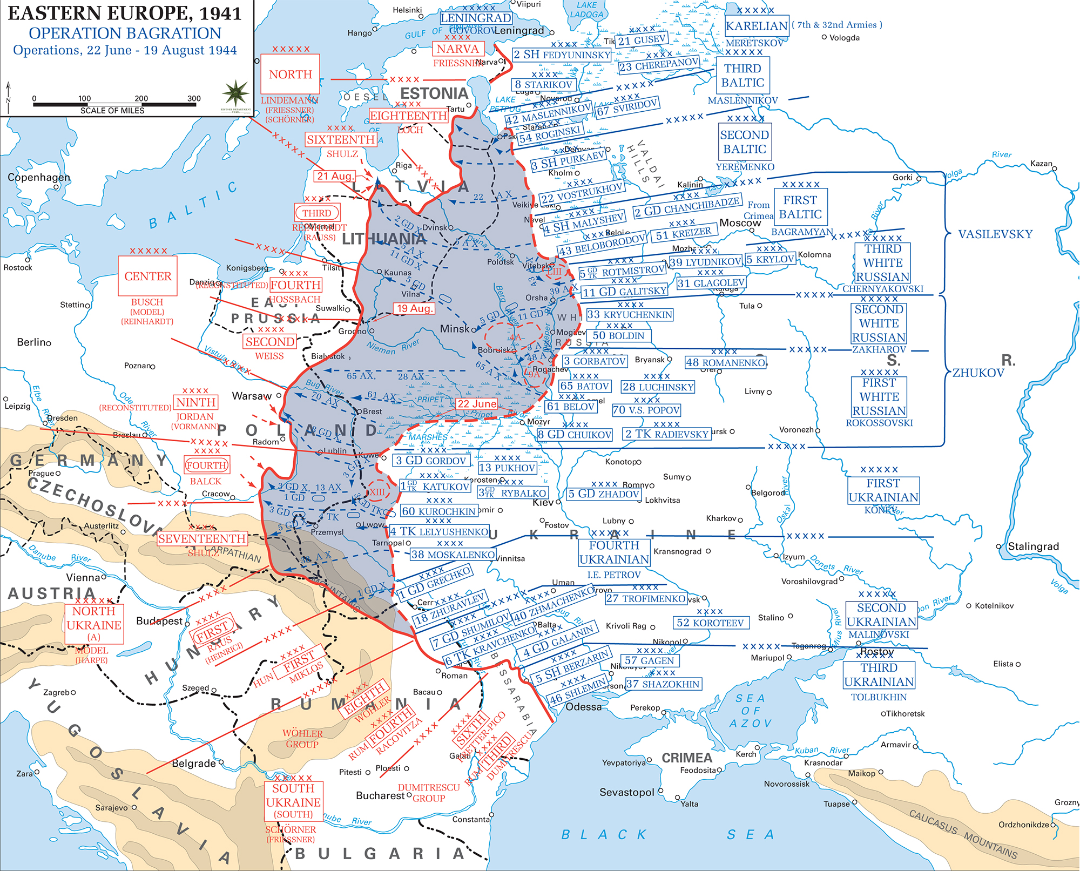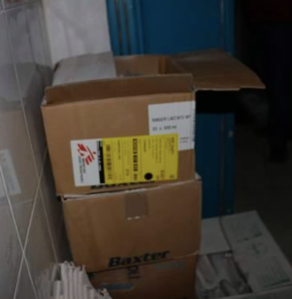“Economic sanctions”, a mode of coercion in international relations resuscitated in recent years, has prompted renewed and lively scholarly interest in the subject. Why have such measures become so popular?
One answer is that they “constitute a means of exerting international influence that is more powerful than diplomatic mediation but lies below the threshold of military intervention”[1]. Another answer is that “they engage comparatively less internal political resistance than other candidate strategies […]. They do not generate sombre processions of body bags bringing home the mortal remains of the sons and daughters of constituents”[2], in other words, they cost little to the side imposing the sanctions. The notable predilection by the United States for economic sanctions[3], suggests that such a tool is particularly useful for economically powerful states that are themselves relatively immune to such measures.
This tool of collective economic coercion, with antecedents such as siege warfare and blockade going back to biblical time [4], was used during most of the 20th Century, particularly in war situations. Although the United Nations Charter, drafted during the later stages of World War II, includes provisions for the imposition of economic sanctions (Article 41), the Security Council – empowered to resort to this tool – only used it twice between 1945 and 1990, against Rhodesia in 1966 and South Africa in 1977.
In our discussion we designate economic sanctions as “coordinated restrictions on trade and/or financial transactions intended to impair economic life within a given territory”[5]. To the extent that measures intend to impair “economic life within a given territory” through restrictions on trade and/or finance, they constitute, for our purposes, economic sanctions. Selective or individualized measures, such as restrictions on specific goods (arms, luxury items, some forms of travel), are therefore not considered as economic sanctions. Symbolic economic deprivations, such as partial withholding of aid,do not amount to economic sanctions if their intended effect is primarily to convey displeasure, rather than to affect the economy.
This article examines how economic sanctions have been perceived, justified or criticized with regard to the nature of such adverse measures. Understanding how economic sanctions are supposed to achieve their intended purpose is necessary in order to dispel a simplistic view that such measures are a humane alternative to physical force.
- A short history of the debate on economic sanctions before 1990
Scholarly work before 1990 on economic sanctions and related measures, such as boycotts, centred on a handful of disparate cases: The Arab oil boycott, the U.N. sanctions imposed on Rhodesia, the sanctions imposed on the South African apartheid regime and the COCOM trade restrictions imposed by the West on the Socialist bloc[6]. A number of authors, including particularly Doxey and Hufbauer [7], provided during this period a relatively comprehensive treatment of the subject with Doxey emphasising the theoretical aspects of the subject-matter and Hufbauer and his colleagues providing impressive details on 116 sanctions episodes between 1914 and 1990. The Arab oil boycott may have chilled the enthusiasm of some Western politicians of that period for the economic weapon, since this weapon appeared for the first time in the “wrong” hands. Scholarly debate in the United States, moderated by Richard B. Lillich, reflected the ambivalent attitudes toward economic sanctions prompted by the Arab oil boycott [8].
The increasing imposition of unilateral coercive measures by the United States against developing countries prompted the adoption, over a period exceeding 20 years, of numerous United Nations resolutions and declarations, sponsored by such countries, against the use of unilateral economic coercion[9]. The focus of their concern was that such measures impeded their economic development. The sanctions imposed on South Africa and the subsequent end of the apartheid regime strengthened the belief, particularly among progressive circles, that economic sanctions constitute a peaceful alternative to the use of force.
- Overview of the debate in the 1990s
From the demise of the Soviet bloc and the concomitant change in the international balance of forces emerged a world order dominated by the United States. The United States henceforth effectively set the international agenda as reflected in the workings of the United Nations Security Council or by adopting unilateral hegemonic policies towards other states[10].
The invasion of Kuwait by the Iraqi army in August 1990, condemned by virtually all U.N. members, provided the United States with a unique opportunity to assert its leadership within the international order[11]. The dormant enforcement powers of the U.N. Security Council were duly resuscitated. On 6 August 1990, the Security Council imposed stringent economic sanctions on Iraq and occupied Kuwait[12]. Thus began what David Cortright and George A. Lopez termed “The Sanctions Decade”, the title of their book[13].
Between 1990 and 2000, the U.N. Security Council imposed economic sanctions against Iraq, Haiti, Libya, former Yugoslavia, Sierra Leone, Angola (UNITA), Cambodia and Afghanistan. A number of other countries were subjected to non-economic sanctions, particularly arms embargoes and diplomatic sanctions. Regional organisations, including the Organisation of American States (OAS)[14], the European Union[15] and the Economic Community of West African States (ECOWAS)[16], imposed economic sanctions, independently from, or in conjunction with U.N. sanctions. In that decade, international sanctions by the United States became what has been termed a “growth industry”[17]: According to the National Association of Manufacturers, unilateral sanctions policies imposed by the United States affected 42% of the world’s population[18].
The proliferation of economic sanctions spawned a vast literature on the subject. As the decade progressed, numerous symposia and conferences were organised to discuss economic sanctions in general, their specific implementation, effectiveness, impact and legal aspects. For a long time, it was assumed – at least by public opinion – that economic sanctions were more humane than armed warfare. Michael Reisman aptly describes the rationale for this assumption:
Economic sanctions have enjoyed great popularity among people of pacifistic bent, because they seem to offer wholly non-violent and non-destructive ways of implementing international policy (…) Such assumptions are unfounded (…) The apparent reason for this persistent blindspot (…) has been the incorrect assumption that only the military instrument is destructive.The assumption that non-military strategies are inherently non-destructive or nonlethal has also insulated their prospective and retrospective appraisal in terms of basic human rights instruments. The consequences of this blind spot can be very grave” (emphasis added)[19]
The devastating consequences of the U.N. sanctions against Iraq and Haiti, and of U.S. sanctions against Panama and Cuba, undermined the faith of many in the apparent softness of the economic weapon. Peace activists who for many years promoted economic sanctions as a humane alternative to the use of military force began to realize the truth expressed almost a century ago by U.S. President Woodrow Wilson, when he described such measures as a “peaceful, silent [and] deadly” pressure that “no modern nation could resist”[20].
- The contours of the debate on economic sanctions since 1990
Due to the wealth of articles, books, resolutions, declarations and other writings on economic sanctions since 1990, we will limit ourselves to classify such writings into six rough categories:
- Studies of economic sanctions within the field of international relations[21].
- Studies concerned with the effectiveness of economic sanctions in general or in particular cases. These are essentially utilitarian efforts aiming to prove the futility of economic sanctions as a policy tool, or recommend improvements to increase their coercive effects[22].
- Studies examining the fine mechanics of implementing economic sanctions, such as the enactment of regulations in domestic jurisdictions for the implementation of Security Council decisions, monitoring compliance with sanctions, interdiction measures by naval forces, etc[23].
- Studies which document the adverse humanitarian impact of economic sanctions[24].
- Studies concerned with means of mitigating the humanitarian impact of economic sanctions. Such efforts range from attempting to improve the effectiveness of existing humanitarian programmes to recommending alternative forms of international coercive measures (individualised sanctions, financial sanctions, etc.)[25].
- Studies regarding the ethics and the legality of economic sanctions under public international law or their compatibility with human rights norms and international humanitarian law[26].
The recent change in scholarly perception of economic sanctions is reflected in the work by Margaret Doxey. The “Select Bibliography of General Works on Economic Sanctions” provided at the end of Doxey’s first edition of her seminal book does not contain a single title referring to the human or humanitarian consequences of economic sanctions. Most works listed there deal with these measures as a policy instrument or as a tool of statecraft, addressing their utility, effectiveness, implementation, enforcement, their relation to the international legal order and to international relations in general.
In Doxey’s second and third editions of the same book[27], published after the imposition of sanctions against Iraq, she specifically addresses the humanitarian consequences of economic sanctions. At least since 1995 authors dealing with economic sanctions generally include a discussion about the humanitarian effects of such measures, even when their focus remains utilitarian.
- Understanding the mechanism of economic sanctions
In order to effectively describe a complex and highly politicized phenomenon, such as economic sanctions, the utmost care in the choice of terminology is necessary. Among the tools of politicians figure their creative use of language, including the invention of euphemisms and obfuscatory expressions.
Discussing the role of euphemisms in political discourse, Stanley Cohen writes:
The most familiar form of reinterpretation is the use of euphemistic labels and jargon. These are everyday devices for masking, sanitising, and conferring respectability by using palliative terms that deny or misrepresent cruelty or harm, giving them neutral or respectable status. Orwell’s original account of the anaesthetic function of political language – how words insulate their users and listeners from experiencing fully the meaning of what they are doing – remains the classic source on the subject[28].
Judge Weeramantry, in his Separate Dissenting Opinion on The legality of nuclear weapons (International Court of Justice (Advisory Opinion) (1996)), castigates […] the use of euphemistic language – the disembodied language of military operations and the polite language of diplomacy. They conceal the horror of nuclear war, diverting attention to intellectual concepts such as self-defence, reprisals, and proportionate damage which can have little relevance to a situation of total destruction.
Horrendous damage to civilians and neutrals is described as collateral damage, because it was not directly intended; incineration of cities becomes “considerable thermal damage”. One speaks of “acceptable levels of casualties”, even if megadeaths are involved. Maintaining the balance of terror is described as “nuclear preparedness”; assured destruction as “deterrence”, total devastation of the environment as “environmental damage”. Clinically detached from their human context, such expressions bypass the world of human suffering, out of which humanitarian law has sprung.
With regard to economic sanctions we will show that euphemisms have been used (a) to hide the mechanism by which such measures are expected to achieve their declared purposes; (b) to imply that these measures target wrongdoers; and (c) to imply that such measures are compatible with humanitarian principles. Regardless whether such obfuscation is deliberate, represents a “blind spot”, or results from the lack of intellectual rigour, the effects of such abuse of language are not innocent. One of the first tasks of those who study economic sanctions is to bring order into the use of terminology. We will review some of the most common linguistic devices that have been used to mask the reality of economic sanctions.
(a) How are economic sanctions expected to achieve their declared purpose?
The main declared purpose of economicsanctions is mostly to induce a government to comply with the demands of the sanctioning parties. This is done by crippling the economy in the targeted territory. While the demands imposed along sanctions may be fully legitimate, this article is solely concerned with the mechanism used to secure the compliance with these demands as well as with some of the linguistic devices that mask this mechanism.
The mechanism by which economic sanctions are expected to achieve their declared objectives is seldom discussed in public[29]. The implied theory of economic sanctions is that by crippling the economy within a territory, the authorities of that territory are prevented from satisfying popular needs such as the supply of commodities, services and work. Massive shortages that ensue are supposed to cause popular discontent, which would translate into a call for the removal of the authorities or a pressure on the authorities to comply with external demands. The theory is thus predicated on causing civilian pain to achieve a political gain.
Cortright and Lopez, invoking other commentators, dismiss this theory of economic sanctions as “naive” and claim that “there is no direct transmission mechanism by which social suffering is translated into political change”[30]. Yet they do not provide a more plausible explanation of the mechanism by which economic sanctions (as distinct from other adverse measures) are expected to yield the compliance of country’s leaders with external demands.
It is not surprising that politicians are loath to acknowledge that a political goal is to be achieved by inflicting severe suffering on a civilian population. To hurt innocent civilians in order to extract concessions from a government is, after all, what is defined in U.S. law as international terrorism[31]!
(b) Who are the true targets of economic sanctions?
As the mechanism of economic sanctions requires the generation of popular discontent within the targeted territory and as such measures inevitably affect the lives of the civilian population, it is axiomatic that the targets of such measures are those who happen to live in that territory, without distinction. This fact must be borne in mind when examining the language used to address the various aspects of economic sanctions.
Depending upon their position in society, however, individuals and families may suffer the consequences of economic sanctions to a different degree. Those who suffer most from economic sanctions are vulnerable and powerless population groups whereas the powerful and the wealthy can often avoid the most adverse consequences and may, sometimes, even enrich themselves from the inevitable emergence of black markets. It is thus accurate to say that economic sanctions target the civilian population of a given territory as a whole, particularly the most vulnerable segments of society. In making this statement, it is presumed that those who adopt a policy intend its foreseeable consequences. Certainly those who maintain a given policy after having been put at notice of its severe consequences, must be deemed to have intended such consequences.
(c) Euphemisms used to mask the mechanism of economic sanctions and the identity of the targets
The examples provided below represent euphemisms commonly used by writers, media and politicians to mask the wholesale and indiscriminate nature of economic sanctions.
“Target state”
Various authors sometimes refer to “senders” and “targets” of economic sanctions as shortcuts[32]. The term “sender” refers to the individual state, the regional organisation or the international organisation imposing the sanctions. The term “target” usually refers to the state against which the sanctions are imposed.
While the term “sender” serves adequately as a shortcut for the entity or entities who impose economic sanctions, the term “target” masks the identity of the true addresses. While sanctions are typically coercive, they cannot, obviously, coerce an object, let alone an abstract construct, such as “state” or “country”. While material objects can be targeted for destruction, only human beings can be the targets of coercion[33]. Unless measures are specifically coercing the decision-makers in the targeted territory in their individual capacity (in which case the designation economicsanctions would not be applicable), the targets of economic sanctions are simply all those who reside in the targeted territory. From the point of view of the victims of economic sanctions it does not matter whether the expression “target state” is a deliberate obfuscation or results from an inadvertent or convenient “blind spot”, that makes them invisible “targets”.
One variant of the expression “target state”[34] is “offending nation”[35], an expression which imputes collective culpability and provides indirect justification for imposing collective injury[36].
The conceptual foundation of the concept “target state” rests on the view of the global system as a set of interacting black boxes (states) whose contents is irrelevant. The following example illustrates the chilling implications of such conceptualization:
The purpose of Article 41of the UN Charter is not to exact retribution, but to provide for the international excommunication of a delinquent State as an incentive to reform. The Security Council thus seeks to cut out a – temporarily – cancerous cell from the global body[37].
Here a state is compared to a ‘cancerous cell’ which should be removed from the global body, apparently without consideration of its human contents. Such conceptualization echoes the perspective and the language of Adolf Hitler, as reflected in Mein Kampf[38].
By treating states as entities that possess an autonomous will and existence, rather than the mere symbolic representation for the individual human beings who live within the given area, perpetrators of the most odious crimes against humanity could in the past insulate themselves against pangs of conscience[39].
Conflating a population with its leader
Another obfuscation used to imbue economic sanctions with an ethical veneer, is to imply that they target a particular loathsome individual rather than a population.
The following example is culled from the proceedings of the debate that took place in the U.S. Congress before the Gulf war of 1991. Senator B. Bradley refers there to Iraq in the third person male and singular, conflating it invidiously with the person of the Iraqi President, Saddam Hussein[40].
We would isolate Iraq from the international economic system, with sanctions to deny him markets for his export, oil, to freeze his foreign financial assets, and to deny his access to spare parts and supplies on which his military machine depends.”(emphasis added).
The obfuscatory nature of this statement is readily apparent from this unusual syntax. But beyond this obvious fact, the author actually conflates a country’s markets and foreign financial assets with those of one person, a fantastic claim by itself. Income from Iraqi oil exports were massively used, not only to finance Iraq’s repressive apparatus and a large and ineffective army, but also to develop Iraq’s infrastructure, health services and school system, reduce poverty and secure access to an adequate supply of nutritional food for all segments of the population. Among items banned by the sanctions, at first, were not only military goods as suggested above, but equally hygienic articles, books, kitchen utensils, children toys and the like. Even food supplies for Iraqi civilians were initially included in the trade ban.
“Collateral” and “unintended” effects
The expression collateral effects(of economic sanctions) is borrowed from the language of armed conflict. The expression “collateral victims” conveys the idea that innocents harmed from military attacks are a regrettable but unavoidable by-product of legitimate warfare, provided that the attacks are justified by the principles of (military) necessity and proportionality and do not indiscriminately target civilians. The term “collateral” has certainly been abused by parties to armed conflict and there will always be disputes about the necessity of a particular attack, its proportionality with regard to the ultimate purpose and the care taken by the conflicting parties to ensure the safety of non-combatants. But the principles (of necessity, proportionality and humanity) are not in dispute.
The weapon of economic sanctions is incapable of discriminating between combatants and civilians. It is levelled at the (national) economy composed mainly by the civilian population[41]. The term “collateral” is thus inapposite[42] with relation to economic sanctions, with the exception of unintended consequences affecting individuals and companies within other states. Article 50 of the U.N. Charter foresees such “collateral” consequences of economic sanctions:
If preventive or enforcement measures against any state are taken by the Security Council, any other state, whether a Member of the United Nations or not, which finds itself confronted with special economic problems arising from the carrying out of those measures shall have the right to consult the Security Council with regard to a solution of those problems.
The rationale behind this provision is that preventive or enforcement measures against a state taken by the Security Council, including economic sanctions, are not intended to harm other states, but that unintended harm may ensue. The distinction made in the aforementioned provision between the target state and “other” states with regard to the “right to consult the Security Council” in the case of “special economic problems” supports the assertion that adverse consequences in “other” states are unintended whereas adverse consequences in the target state are intended.
It is sometimes claimed that while harm to the economy is intended by economic sanctions, no harm is intended to the “vulnerable segments” of that population (children, pregnant women, the elderly, the sick): Adverse consequences to these groups are merely “unintended”. When a healthy adult loses employment (and income) as a result of economic sanctions, his or her children are inevitably going to suffer, even if it is claimed that only harm to the parent’s child was “intended” while the harm to the child is not. Comprehensive economic sanctions, being macro-economic policies, do not differentiate between “vulnerable” and “non-vulnerable” populations and even mitigation measures can only marginally compensate for the indiscriminate nature of the “weapon”[43]. T o the extent that mitigation measures fully compensate the adverse consequences of economic sanctions, they defeat the very purpose of the sanctions.
The very expression “vulnerable populations” is inappropriate in the particular context of economic sanctions. While this expression is relevant for emergency situations where resources to children, lactating women, the sick and the elderly must be prioritized (such as when natural calamities occur), its use within the framework of economic sanctions is questionable. Are not all civilians, without distinction, protected by the principles of international humanitarian law? Is it ethical, or even lawful, to coerce or punish innocent people? How can measures that knowingly infringe the human rights of healthy, but innocent, adults, such as the right to travel, to work and to live in dignity, be justified on the account that the individual in question is not a member of a “vulnerable” group? Can children be spared when destitution is imposed on their parents? The risk of invoking expressions such as “vulnerable populations” in the context of economic sanctions, is that they legitimize measures that would inflict harm on civilians deemed “non vulnerable” by the “senders” of the sanctions, while giving an appearance of humanitarian concern[44].
“Humanitarian exemptions”
The expression humanitarian exemptions to economic sanctions is widely used and refer to discretionary permits granted by sanctioning parties to the sanctioned state (and its citizens), for humanitarian reasons. Such exemptions are generally justified by humanitarian concern. The use of this term implies the recognition that economic sanctions, if not assorted by such humanitarian exemptions, would unduly harm the civilian population harm. There is, however, something disingenuous with this expression.
While the immediate purpose of armed warfare is to destroy military facilities and armed forces, the immediate purpose of economic sanctions is to cripple a (civilian) economy, that is to inflict sufferings on the civilian population. A crucial difference lurks behind these two modes of injury: The expression “to destroy a military facility” refers to actions that only seek to prevent an enemy from using violence. The immediate purpose of economic sanctions is, however, to cripple the economy, or more accurately, to severely impair the living conditions of the civilian population. Humanitarian exemptions, by allowing breathing space, undermine the crippling effects of economic sanctions[45]. To the extent that humanitarian exemptions permit civilians to live their normal lives, such exemptions undermine the sanctions regime. For most of its duration, the humanitarian programme grafted on the U.N. sanctions against Iraq was not designed to eliminate sufferings or normalize the living conditions of the population, but merely to prevent a “further deterioration” of the humanitarian situation in Iraq[46]. In other words, sanctioners’ intention was to maintain the population in destitution, though short of starvation.
- Concluding remarks
A blind spot has marked the debate on economic sanctions. This blind spot results, partly, from the fact that the voice of victims of economic sanctions have not reached the ears of those who engage in this debate. In the various seminars, symposia and conferences that have taken place in recent years regarding the need to “humanize” or redesign economic sanctions, the views of past and potential victims of such measures have been conspicuous by their absence. To the extent that economic sanctions should remain an international tool of coercion, the debate on their future modalities must include those who have been directly affected by such measures.
While individuals and groups around the world have successfully exposed the grave humanitarian consequences of past sanctions regimes, they did not succeed in exposing the incompatibility between such measures and human rights. Nor has the international community yet recognized that it owes a moral and material debt to surviving innocent victims of economic sanctions.
It the hope of the present author that by exposing the mechanism of economic sanctions, particularly their instrumentalization of civilian pain as a means to achieve political gain, the international community will realize the need to prohibit wholesale coercion of civilian populations. This can be done by various means, including an international treaty that would define and prohibit economic coercion and oppression of civilian populations and by adding economic coercion and oppression of civilian populations to the list of crimes against humanity under the jurisdiction of the International Criminal Court.
*
Note to readers: please click the share buttons above. Forward this article to your email lists. Crosspost on your blog site, internet forums. etc.
Elias Davidsson is an Icelandic citizen living in Germany. He is a composer, human rights and peace activist and author of several books on 9/11 and false-flag terrorism.
Notes
1. Manfred Kulessa and Dorothee Starck, Peace through sanctions?,Policy Paper 7 of the Development and Peace Foundation, Bonn, Germany, Presented at a Conference in Bonn, January 15, 1998
2. Michael Reisman, Assessing the Lawfulness of Nonmilitary Enforcement: The Case of EconomicSanctions, ASIL Proceedings 1995, p. 354
3. Robert P. O’Quinn of the Heritage Foundation, writes in A User’s Guide to Economic Sanctions(The Heritage Foundation Backgrounder No. 1126, 25 June 1997): “Since 1990… the United States has been far more willing to employ unilateral economic sanctions to achieve other foreign policy objectives. During President Clinton’s first term, U.S. laws and executive actions imposed new unilateral economic sanctions 61 times on a total of 35 countries. These countries are home to 2.3 billion people, or 42 percent o f t h e world’s population.” http://www.heritage.org/library/categories/trade/bg1126.html
4. See Geoff Simons, Imposing Economic Sanctions: Legal Remedy or Genocidal Tool?London & Sterling, Virginia: Pluto Press (1999); Joy Gordon, A Peaceful, Silent, Deadly Remedy: The Ethicsof Economic Sanctions, 13 Ethics and International Affairs (1999).
5. Elias Davidsson, Towards an Objective Definition of Economic Sanctions, unpubl. manuscript (2003)
6. Paul Conlon, The UN’s Questionable Sanctions Practices, Aussenpolitik IV (1995)
7. Margaret P. Doxey, International Sanctions in Contemporary Perspective, first edition Macmillan Press Ltd., 1987 (the second edition was published in 1996); also Gary Clyde Hufbauer, Jeffrey J. Schott, and Kimberly Ann Elliott, Economic Sanctions Reconsidered: History and Current Policy,Washington, D.C.: Institute for International Economics (1985)
8. Richard B. Lillich, Economic Coercion and the “New International Economic Order: A SecondLook At Some First Impressions. In “Economic Coercion and the New International EconomicOrder”, edited by Richard B. Lillich, 107-18. Charlottesville, Virginia: The Michie Company (1976)
9. UNGA Resolution 2625 (XXV) (1970); UNGA Resolution 3281 (XXIX) (1974); UNGA Resolution 210 (XLVI) 1991); UNGA Resolution 52/181
10. See generally Phyllis Bennis, Calling the Shots: How Washington Dominates Today’s UN.New York: Olive Branch Press (1996); see also Elias Davidsson: The U.N. Security Council’sObligations of Good Faith, Florida Jnl. Int’l L., Vol. XV No. 4 (2003), pp. 541-574
11. See, inter alia, Elias Davidsson, The Role Played by the Security Council in Crippling the Iraqi Economy 1990-2001 – An Annotated Chronology, unpubl. manuscript (2002)
12. Security Council Resolution 661 (1990) of 6 August 1990
13. David Cortright and George A. Lopez, Eds. The Sanctions Decade: Assessing UN Strategies in the 1990s. Boulder & London: Lynne Rienner Publishers (2000)
14. Resolution by ad hocmeeting of foreign ministers of the Organisation of American States (OAS), on Haiti, 3 October 1991
15. Riccardo Pavoni, UN Sanctions in EU and National Law: The CENTRO-COM Case, 48 International and Comparative Law Quarterly 1999
16. Reported by Cortright (2000), supra note 11,p. 171
17. Cited by John B. Reynolds, III, in his contribution to the discussion On Country sanctions andthe international business community, Proceedings of the American Society of International Law(ASIL), 1997, p. 333
18. National Association of Manufacturers, A catalogue of new U.S. unilateral economic sanctions forforeign policy purposes, 1993-96, (1997) (with analysis and recommendations)
19. Reisman, supra note 3,p. 354-5
20. Cited by Barry E. Carter, International economic sanctions: improving the haphazard U.S. legalregime, (1988)
21. Leading examples are the works by Margaret Doxey, see supra note 6.
22. Here is a typical utilitarian pronouncement accompanying such studies: “We have found that sanctions sometimes bear fruit, but only when planted in the right soil and nurtured in the proper way”, in Gary Clyde Hufbauer, Jeffrey J. Schott, and Kimberly Ann Elliott: Economic Sanctions Reconsidered, second edition, revised, 2 vols. (Washington, Institute for International Economics, December 1990) (Executive summary); For the utilitarian approach, see also: Christopher C. Joyner, Sanctions, Compliance and International Law: Reflections On the United Nations’Experience Against Iraq, 32 Virginia Journal of International Law (1992); Paul Conlon,Legal Problems At the Centre of United Nations Sanctions, 65 Nordic Journal of International Law(1996); R. Jeker, Chairman’s Conclusions, International Expert Seminar on the Targeting of United Nations Sanctions, Interlaken, Switzerland, 19 March 1998; Cortright and Lopez (2000), see supranote 11; and Stuart E Eizenstat, Under Secretary of State for Economic, Business, and AgriculturalAffairs, Testimony Before the Senate Foreign Relations Committee, Washington, DC, 1 July 1999 http://www.state.gov/www/policy_remarks/1999/990701_eizen_sanctions.html
23. Hazel Fox and C. Wickremasinghe, UK Implementation of Economic Sanctions, 42 International and Comparative Law Quarterly (1993); William B. Hoffman, Global Mandate, National Law: AU.S. Perspective On Chaos and Convergence in Sanctions Implementation, ASIL Proceedings1995; and Richard Conroy,Implementation problems of travel bans: Practical and Legal Aspects(First Expert Seminar: Smart Sanctions, The Next Step: Arms Embargoes and Travel Restrictions). Bonn International Centre for Conversion (BICC), (2000)
24. Richard Garfield, The Impact of Economic Sanctions on Health and Well-being, Overseas Development Institute, London, November (1999); Elizabeth Gibbons and Richard Garfield TheImpact of Economic Sanctions On Health and Human Rights in Haiti, 1991-1994 89 AmericanJournal of Public Health (1999)
25. For example David Cortright, Toward More Humane and Effective Sanctions Management:Enhancing the Capacity of the United Nations System, United Nations Office for the Co-ordination
26. An example of an ethical approach is Joy Gordon, Economic Sanctions, Just War Doctrine, and the “Fearful Spectacle of the Civilian Dead” in Cross Currents, Fall 1999, Vol. 49 Issue 3, at http://www.crosscurrents.org/gordon.htm . Examples of legal approaches, include Starvation As a Weapon: Legal Implications of the United Nations Food Blockade Against Iraq and Kuwait, 30 Columbia Journal of Transnational Law 1992; Hans Koechler, The United Nations Sanctions Policy and International Law, Kuala Lumpur: Just World Trust, 1995; Iraqi Sanctions, Human Rights and Humanitarian Law , 2 Jun 1997 Available from http://www.merip.org
27. Doxey (1996), see supra note 6
28. Stanley Cohen,Government Responses to Human Rights Reports: Claims, Denials, andCounterclaims, 18 Human Rights Quarterly (1996) p. 527
29. See in particular Elias Davidsson, Towards an Objective Definition of Economic Sanctions, unpubl. manuscript (2003), notes 16-17
30. David Cortright and George A. Lopez, Carrots, Sticks and Cooperation: Economic Tools of Statecraft, Fourth Freedom Forum, http://fourthfreedom.org/sanctions/carrotssticks.html
31. U.S. legal statute, Title 18 § 2331, at http://www4.law.cornell.edu/uscode/18/2331.html
32. For example Joyner (1992) (supra note 20): “In a broader sense, sanctions seek to isolate the target from the rest of the international community, and thereby to deprive it of the benefits of international intercourse.” (p.3); or Jonathan Eaton and Maxim Engers, Sanctions: Some SimpleAnalytics, AEA Papers and Proceedings (1999): “We find success more likely when the threatened measure costs the sender little relative to the gain from modifying the target’s behaviour, while the damage to the target is large relative to his cost of complying with the sender’s will” (p.409).
33. Paul Tavernier, Sanctions Économiques Et Droits De L’homme, In Nouvel ordre mondial et droitsde l’homme, edited by Paul Tavernier, Editions Publisud; Université de Rouen, Centre de rechercheset d’études sur les droits de l’homme et le droit humanitaire (CREDHO), (1993) p. 21, concurs: “[L]es sanctions économiques sont destinées à punir l’Etat violateur et à l’inciter à corriger son comportement. Toutefois, l’Etat n’apparaissant comme une entité abstraite, ce sont les personnes, les individus, les femmes et les hommes, qui sont effectivement atteints par de telles mesures.”
34. Blanchard and Ripsman write: “Unlike most writers, our analysis does not focus on how states can maximise the economic pain imposed on a target state ” (Jean-Marc F. Blanchard and Norrin M. Ripsman, Asking the Right Question: When Do Economic Sanctions Work Best?,in Power and thePurse: Economic Statecraft, Interdependence and National Security, edited by Jean-Marc F.Blanchard, Edward D. Mansfield, and Norrin M. Ripsman, Frank Cass Publishers, London & Portland (2000)), p. 220; or “There are three main ways a sender country tries to inflict costs on the target country” (Hufbauer et al, supra note6, p. 28)
35. Victor W. Sidel, Can Sanctions Be Sanctioned?, 89 American Journal of Public Health (1999): “Sanctions should specify that restriction of food, medicine, and other items needed for the health and welfare of the people of the offending nation are specifically forbidden”, pp. 1497-8. The author, obviously, erred in his formulation and had in mind ‘offending government’. Such mistakes show the importance of handling such concepts with utmost care. A similar, though less innocent, amalgamation is reflected by the Economist (London, 30 Nov. 1996), the Editorial of which is titled: “Keep the screws on Iraq”!
36. Some people, probably unaware of its prohibited nature, endorse the principle of collective punishment. A former officer in the United States Armed Forces, wrote on 2 May 1995 to the author: “I spent 6 months of my life in Saudi Arabia, Kuwait and Iraq during Desert Shield and Desert Storm. I knew why my soldiers and I were going over there for and not once questioned the reason…I favour 100% the sanctions that are levelled against the Iraqi nation, although at the end it is the civilian population that suffers the most. They must also be held accountable for the actions of the mad man from Baghdad. For they continue to support his regime whether due to fear or their unwillingness to overthrow him…”.
37. Jeremy P. Carver,Making Financial Sanctions work: Preconditions for successful implementationof sanctions by the implementing state, in Expert Seminar on Targeting UN Financial Sanctions,Interlaken, Switzerland, March 17-19, 1998, published by the Swiss Federal Office for Foreign Economic Affairs, Department of Economy, p.88.
38. Jews were likened to a “maggot [found] in a rotting body” (p. 57), or a “parasite,… who like a noxious bacillus keep spreading” (p.305) (Adolf Hitler, Mein Kampf, Houghton Mifflin Co., Boston (1942), thirteenth printing, Sentry Edition C). To refer to human beings as a “cancerous cell” or to “germs” paves the way to their extermination
39. The National-Socialists were keenly aware of this phenomenon and chose an innocuous term – “The Final Solution” – to help insulate the numerous participants in the genocide of Jews from pangs of conscience.
40. Congressional Record, Proceeding and Debates of the 102d Congress, First Session (No. 6, Jan. 10, 1991) at S135
41. “Unlike rules of warfare, which are based on the protection of civilians, sanctions do not differentiate between non-innocent and innocent parties. The U.S. Committee on Economic Sanctions stated in 1931 that ‘a really successful food embargo ranks well in advance of torpedoing hospital ships and is somewhere near the class of gassing maternity hospitals.’” (Katarina Tomasevski, Between Sanctions and Elections, Pinter, London & Washington, (1997)), p. 218
42. John Pilger reports having asked Peter van Walsum, the Netherlands’ ambassador to the U.N. and chair of the Iraq Sanctions Committee if he agreed with punishing innocent people for the crimes of a dictator, over whom they have no control. He reportedly replied: “It is a difficult problem. Sanctions obviously hurt…they are like a military measure and you have the eternal problem of collateral damage.” Commenting on this reply, John Pilger observes: “The implication that a whole nation is ‘collateral damage’ is astonishing, yet it accurately reflects the moral and intellectual contortion common in United Nations Plaza, the U.S. State Department and the Foreign Office, as a justification for the destruction of a country. . “, in Sanctions on Iraq kill 200 children every day, New Statesman, London, 6 March 2000
43. Even the most elaborate humanitarian scheme cannot supplant an established social and political structure within the sanctioned country. In order to mitigate the effects of sanctions, sanctioners need the co-operation of the government that is allegedly been targeted by the sanctions!
44. This expression and its application would be justified if one would consider all healthy, male, adults, in a sanctioned country as deserving punishment.
45. Doxey (1996), supra note 6, pp. 106-107: “[The question arises how far it is desirable – and possible – to limit the scale of economic damage by granting exemptions on humanitarian grounds. Far-reaching exemptions undermine the effectiveness of the sanctions; in a telling metaphor a 1930s commentator wrote that ‘the acid of exemptions will eat the very heart out of a sanctions regime.’”
46. See, in particular, Elias Davidsson, The Role Played by the Security Council in Crippling the Iraqi Economy 1990-2001, unpubl. manuscript (2002),, chapter 4.2 (The Purpose of the “Oil-For-Food” Programme)


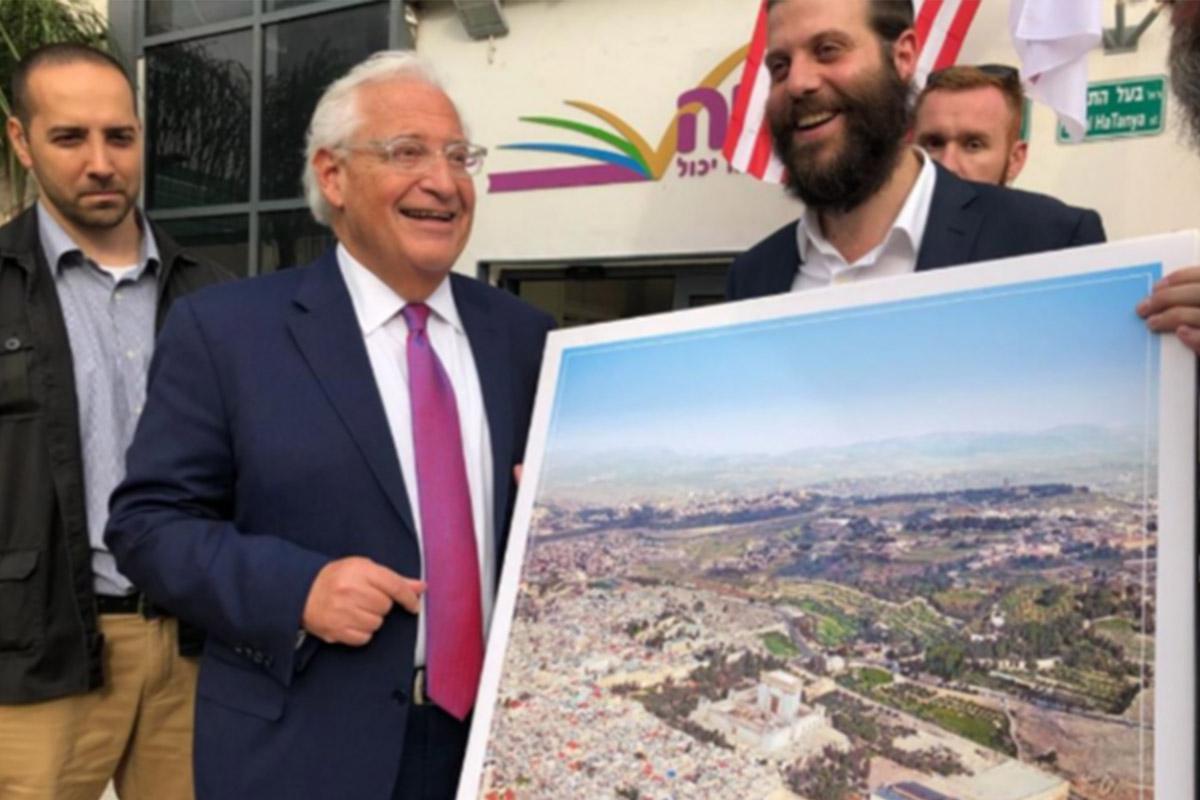



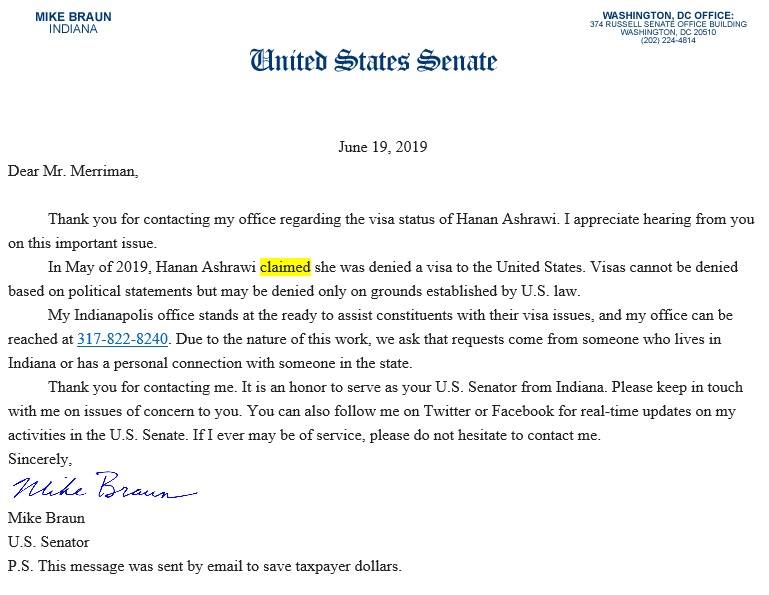
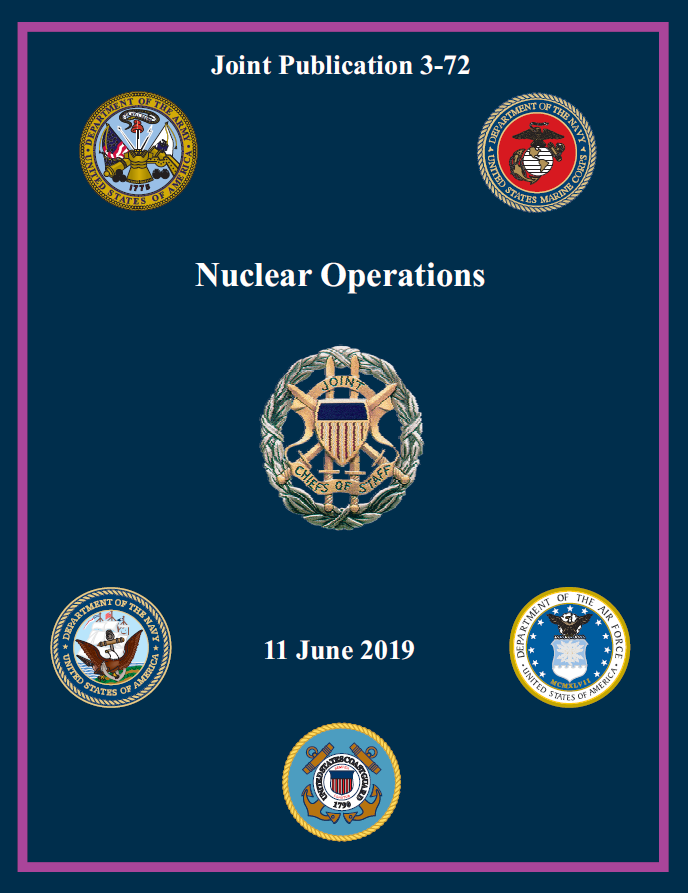

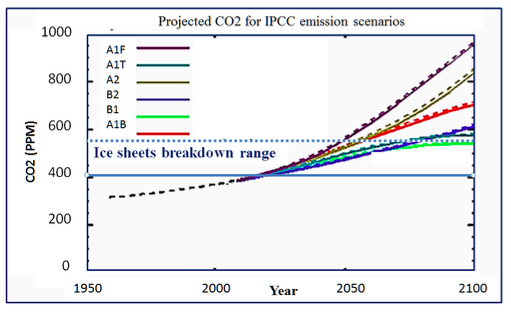
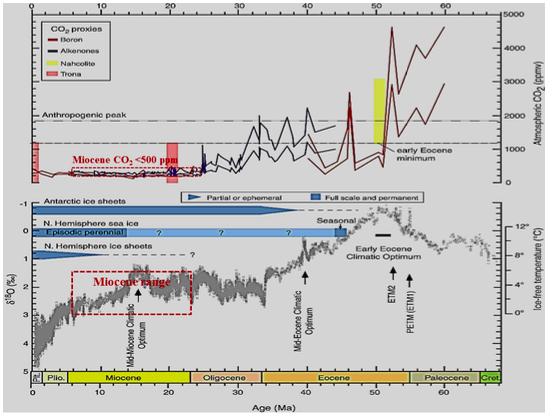

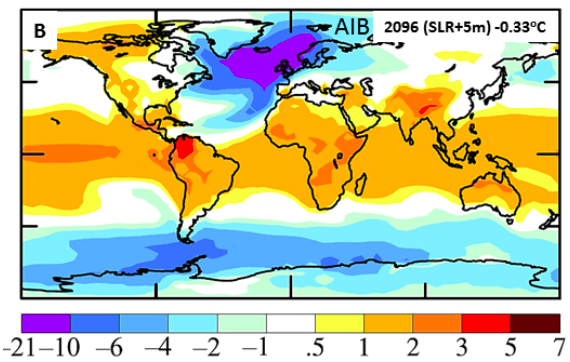
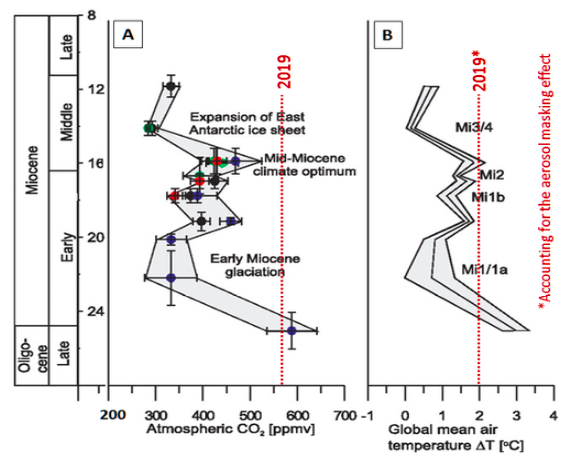
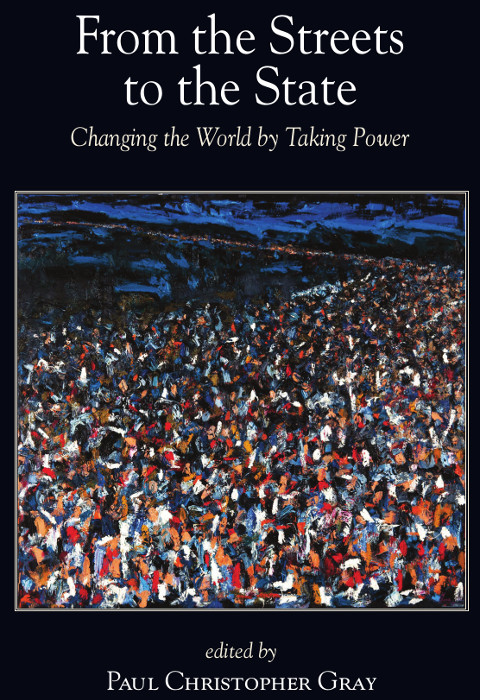

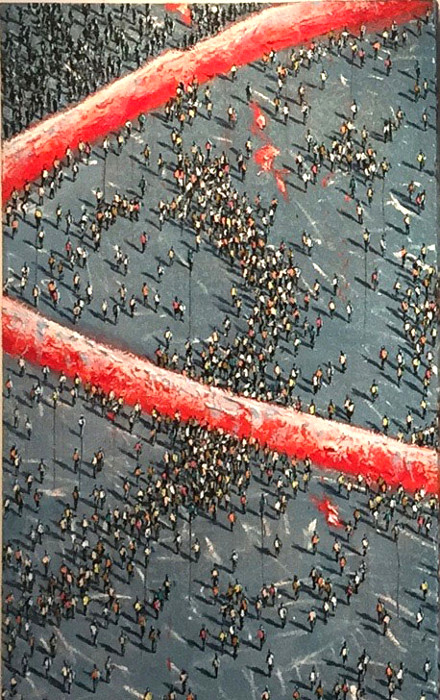
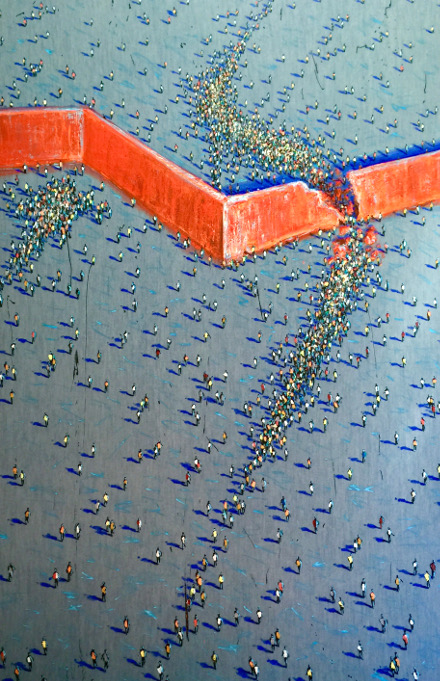


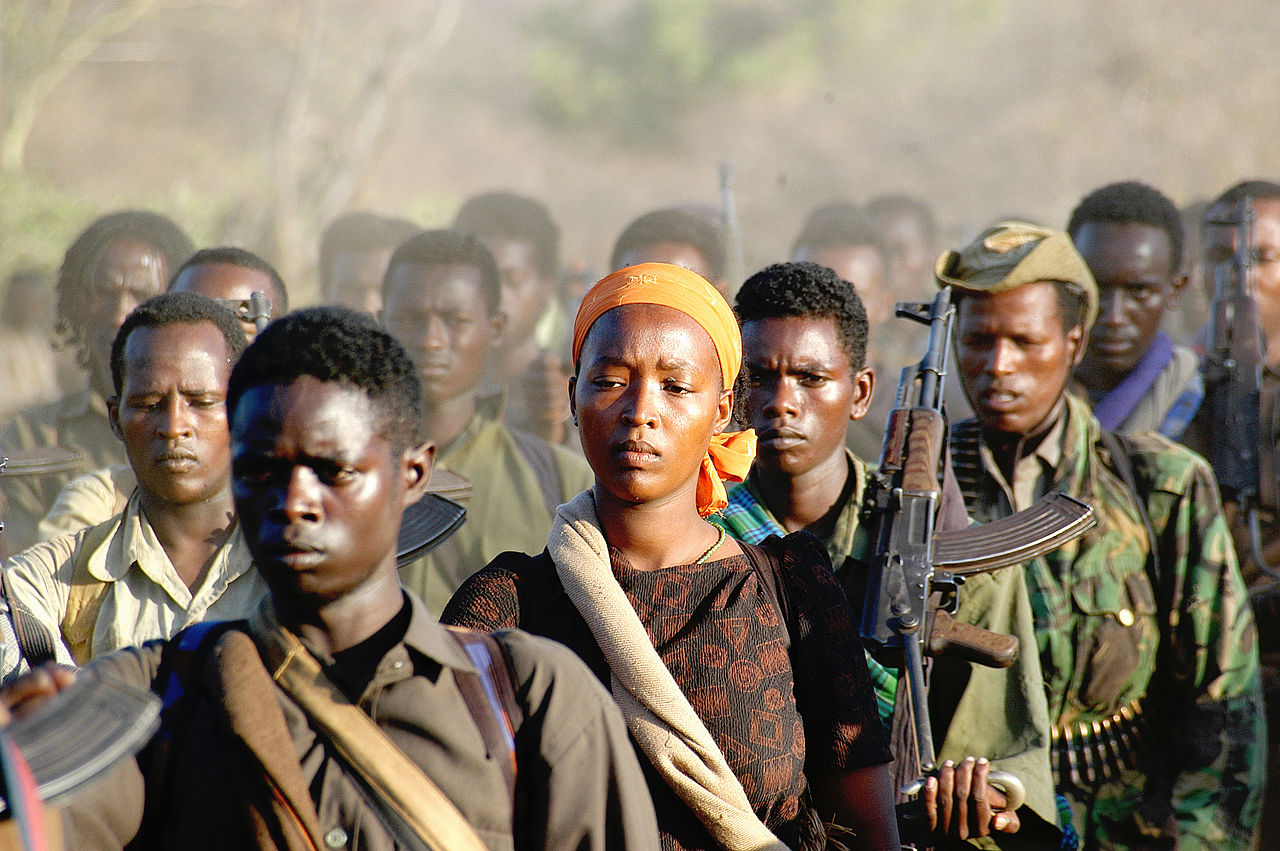







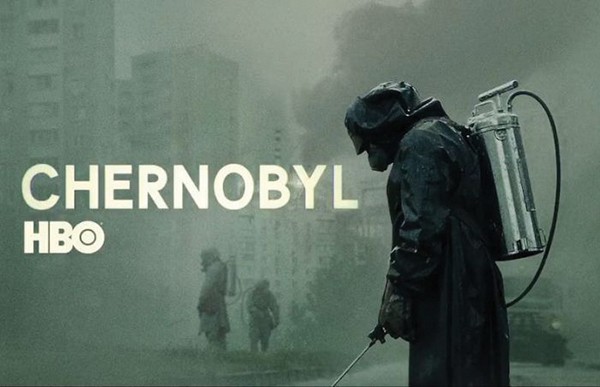

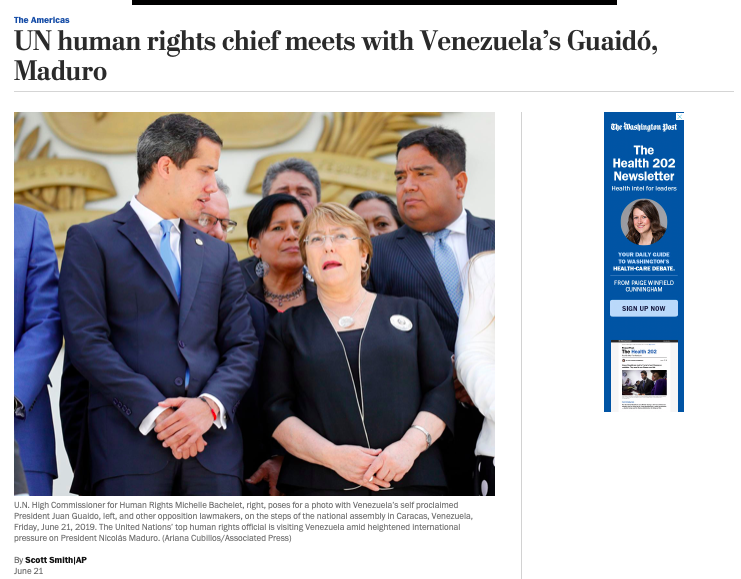
 Can you
Can you 

